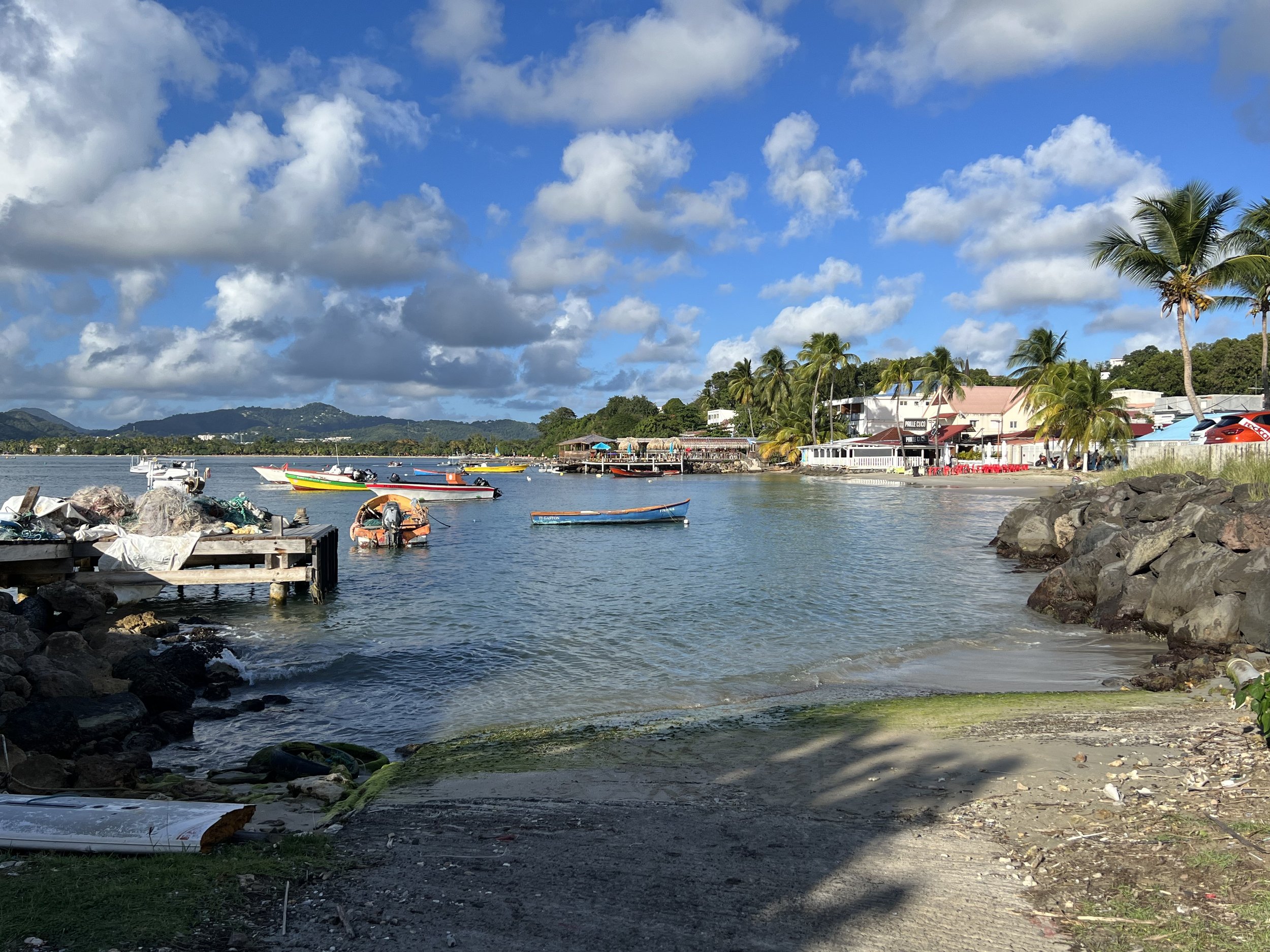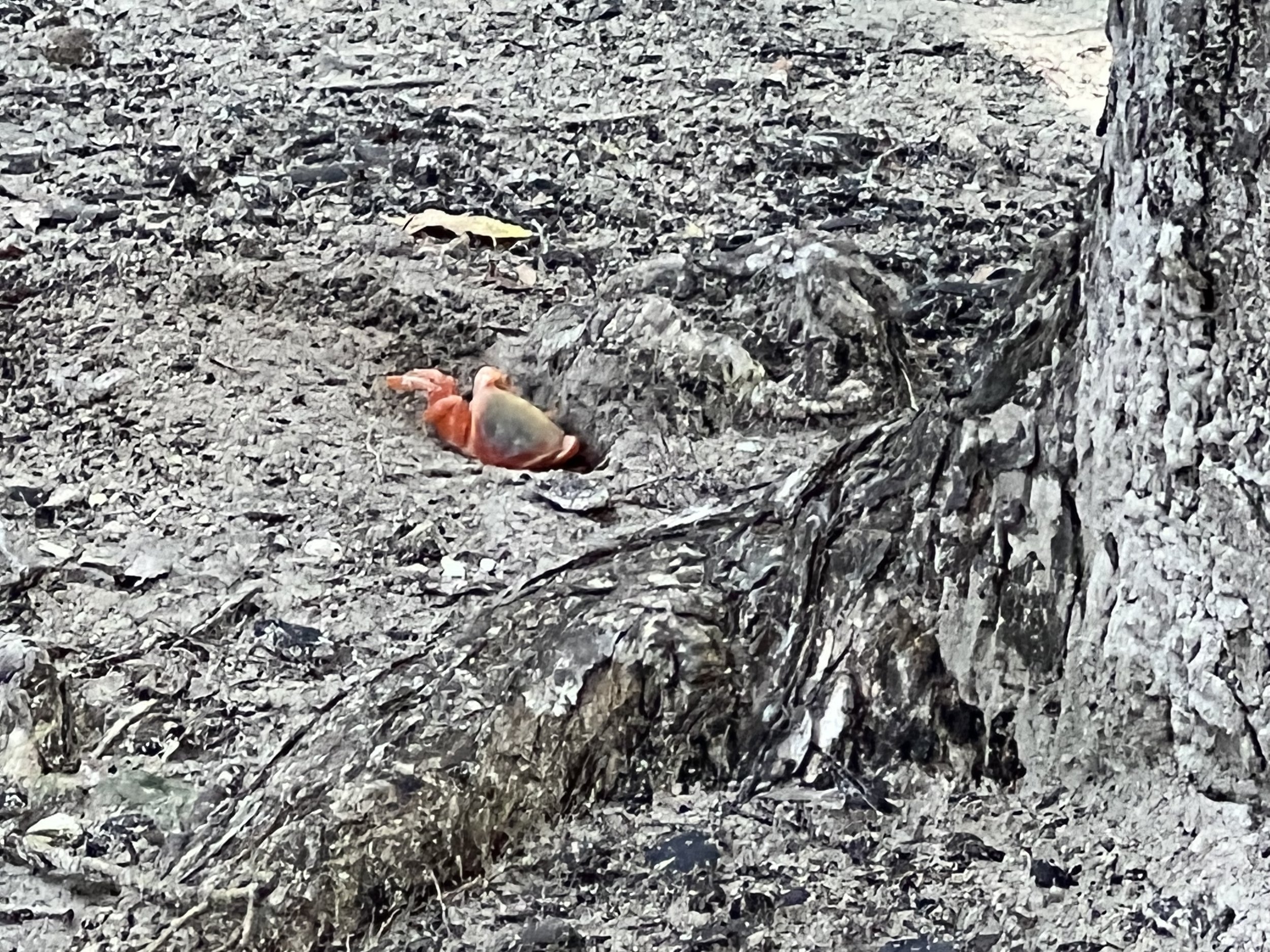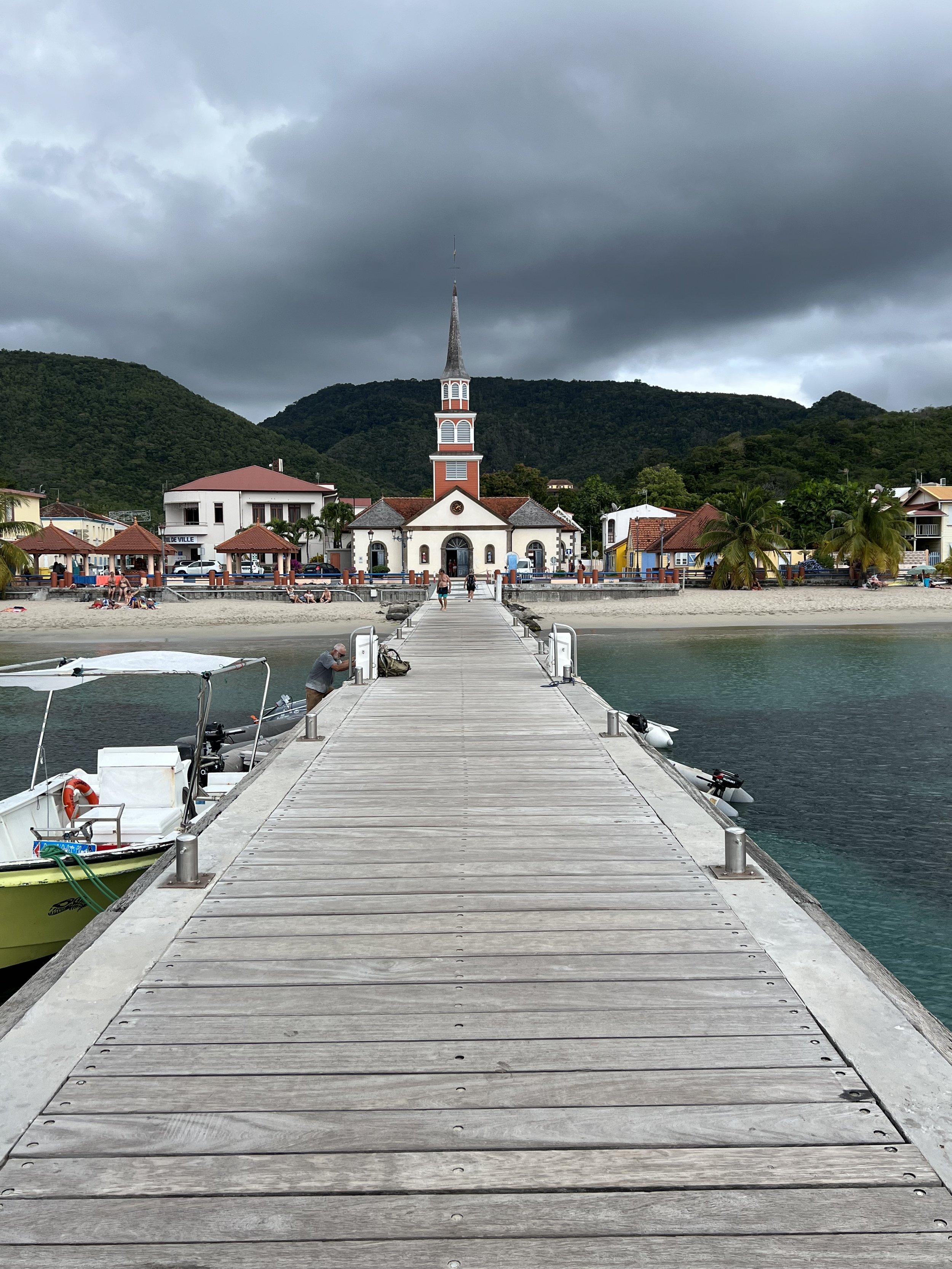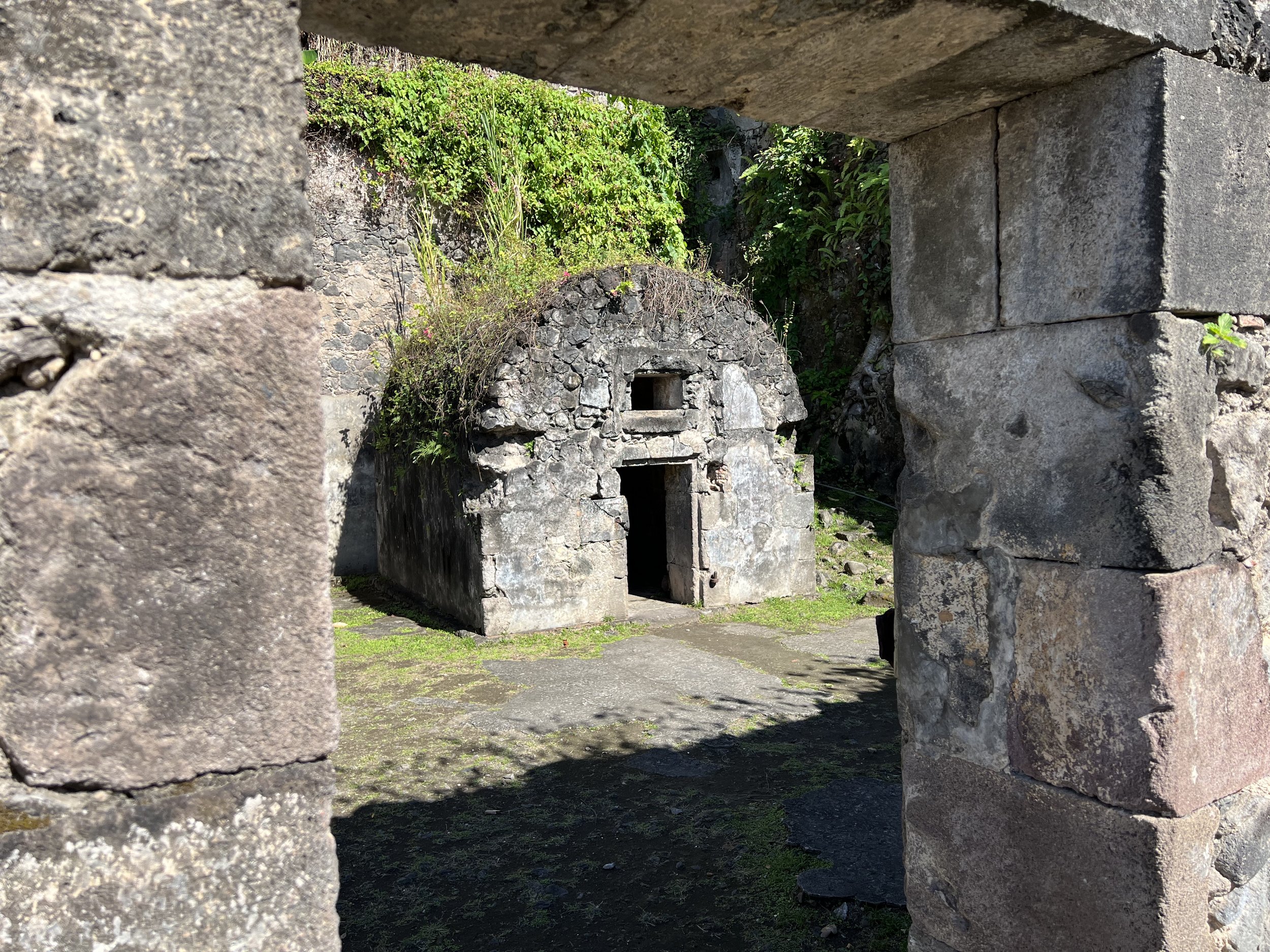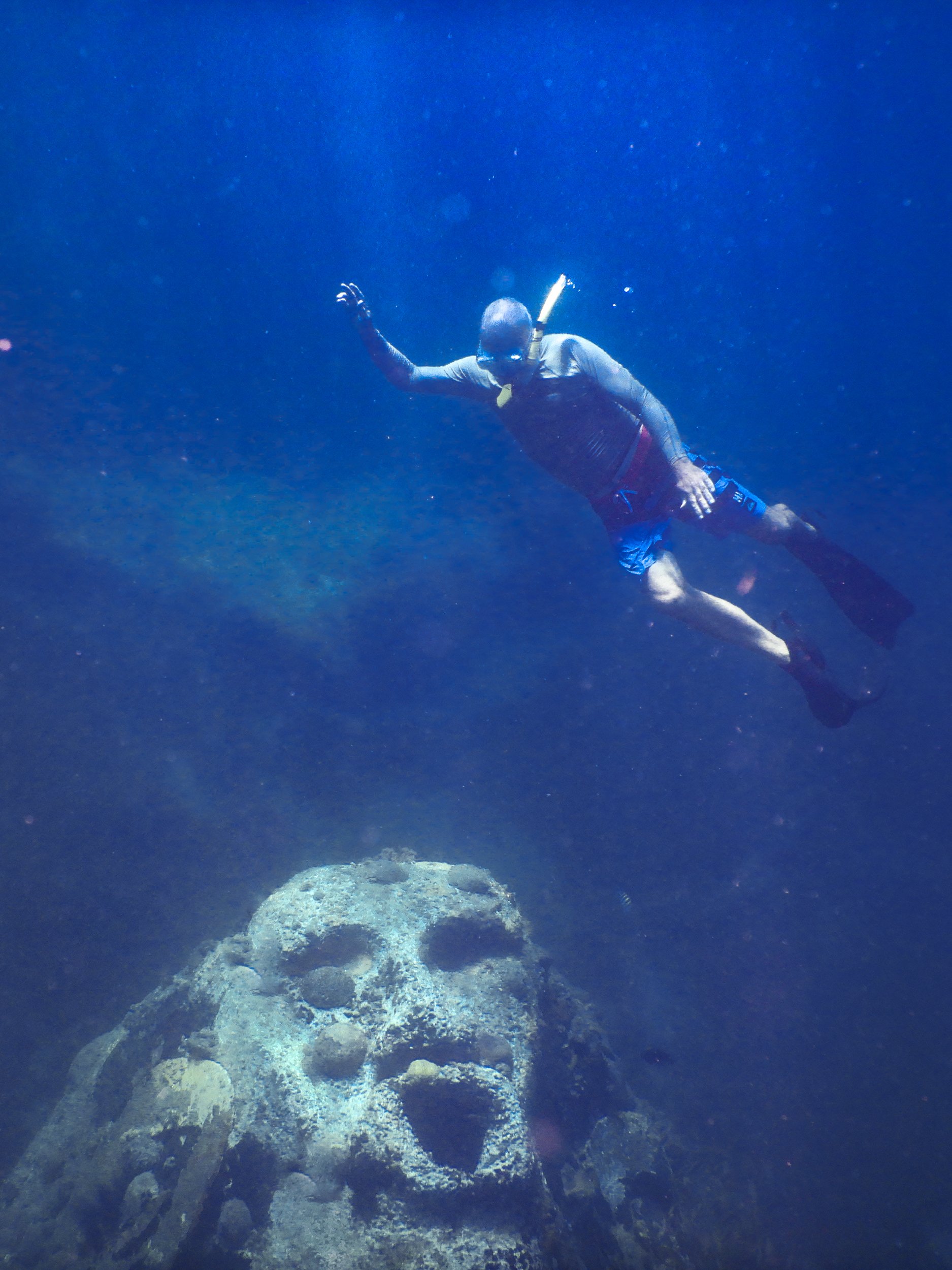Windward sailing: Martinique
Fishing harbor at St Anne
The crossing from Bequia to Martinique took a couple of days, we stopped overnight in St Lucia and left early the next morning, no need to check in. Our first stop was St Anne, a small town with huge sandy bay, and correspondingly enormous number of anchored sailboats. It was the busiest place we had been for quite a while. Just a little further up into the bay is Marin, a larger town and with its huge marina, it is a center for boat work of all kinds.
We based ourselves in St Anne, but took the dinghy in to Marin to stock up on groceries at the much larger stores. It was such a treat to see cheese, pate and cheap wine again, it felt so very French. The fridge was once again full of goodies for us to enjoy. We introduced ourselves to Jenn and Mike on Sanitas via our mutual friends Lori and Dan on BeBe. They had been in St Anne for a while and knew some great hikes, so we went with them on the walk around the point to Grande Anse Salines, a beautiful and popular beach with many beach side restaurants. It was such a long beach however it did not feel at all crowded despite the many visitors. We had a lovely lunch and walk back on the sandy trail through mangroves and woodland.
We rented a car for a couple of days and explored inland. Martinique is the largest of the Windward islands and as the only safe harbors and anchorages are on the leeward side of the island, one could easily miss much of what there is to see. It is quite mountainous, the northernmost tip dominated by the peak of Mt Pelée. We drove up the east coast and visited our first true Rhum Agricole distillery. We selected Rhum Clément as they also have a wonderful sculpture garden in the grounds.
Sculpture at Clemont Rhum Distillery
On Martinique they are justifiably proud of their Rhum Agricole, that is spirit made from freshly pressed sugar cane as opposed to Rum, which is made from molasses (an industrial by product of sugar production). The land all around the site was full of sugar cane fields presumably supplying the raw material. We were looking forward to the tasting and tour, but first we enjoyed the art.
There was also an original sugar cane press, with three large drums for squeezing the cane, and you could see where the syrup flowed out. There were four large warehouses storing the barrels of rhum, each stacked in a different way, with quite an intoxicating aroma.
The tour was interesting, the grounds lovely. What was missing was any reference to the labor used to establish this very successful business. Martinique has a horrific record of slavery, approximately twice as many enslaved Africans went to Martinique and Guadeloupe as went to all of the US. It was not mentioned at all here at the distillery, nor throughout any of the places we visited on these islands. It seems blotted from the history books and is a lost opportunity to educate and learn from the past.
Map in the plantation house, 1783.
Back in St Anne’s we heard of a regatta that was about to start. It was a race with the traditional local sailing boats called yole. They are light, fast, shallow draught sailboats, hand made from wood about 10m long. They have two square sails hoisted up unstayed bamboo masts kept upright by a long line from the mast top and a crewman counterbalancing the sail. With no keel they are very unstable but extremely fast. Instead of the ballast usually found in the keel they have a crew of many large men who balance the boat by hanging on to poles that stretch out over the water. The boat is steered by a long oar off the back and tacking somehow involves the crew at the mast swinging around on a rope and the paddling of oars to help turn the boat around. It frequently does not go to plan and we saw more than one boat slowly sinking as it was towed back to the beach.
Yole sailing in the regatta with Diamond rock as a backdrop.
A couple of weeks passed very pleasantly in St Annes, catching up with old friends (SV Kalli) and making new friends (SV Zora, SV Razorbill and SV Sanitas). We left to continue north and explore some less busy anchorages up the coast. Diamond Rock is quite the landmark sitting off the southwest corner of Martinique. In 1804 it was commissioned into use by the Royal Navy, HMS Diamond Rock officially became a war sloop. Cannons were hauled up its steep sides to protect the southern shores of Martinique and the straits between St Lucia and Martinique from the French Navy. It was most effective for over a year but Napoleon was incensed and sent his Admiral to recapture the rock. Finally in May 1805 Diamond Rock returned to French control, and Martinique along with it.
Diamond Rock.
Our first stop was Les Anses d’Arlet with the most picturesque church at the head of the quay. We enjoyed the fresh croissant from the bakery in the morning, warm baguettes and a great hike over the headland to the next bay of Grand Anse d’Arlet.
Church in Les Anses d’Arlet.
We tucked in and out of a couple more bays, Grand Anse d’Arlet and Anse Dufour. Each time we checked out the snorkeling and what was onshore. In Anse Dufour we had a wonderful underwater encounter with a sea turtle, usually very shy, this one slowly swam away, teasing us to try and keep up.
Sea turtle, Anse Dufour.
The capital of Martinique is Fort de France. We looked at it from across the bay and it looked, well, like a city. Not appealing at all. We were not in need of any shopping trips, our supplies were well stocked, so we passed by and sailed on up to St Pierre, an interesting town near the north end of the island, and a port where we could check out of Martinique.
Mount Pelée looming over St Pierre.
St Pierre has a very interesting history. In the late nineteenth century St Pierre was the Paris of the Caribbean. The wealth of all the sugar plantations was concentrated here and consequently it became the commercial and social center of the island. This all changed on May 8th 1902 when Mt Pelée, the volcano that loomed over the town, erupted in such a violent fashion the town was destroyed along with the 30,000 inhabitants. One survivor, Louis-Auguste Cyparis was a prisoner in a stone cell at the jail. We went to check it out.
Evidence of buildings past were everywhere, many old walls incorporated into new structures. Grand staircases to nowhere and churches laid out like blueprints. Finally we got to the old prison site.
The isolation cell that saved Louis-Auguste Cyparis.
The non historical part of St Pierre felt very rundown. It was a shame as a lot of the abandoned buildings obviously had good bones, and were quite elegant in their day. If only the money and a will were there to fix things up.
We heard of a very interesting hike up in the hills behind St Pierre along the Canal de Beauregard. We caught the 8am bus from the town square and headed up into the hills. The canal was built to bring water from the hills down to the plantations nearer the coast. The scenery was so rugged and the drop offs so steep, one can only imagine the toll such a project must have taken.
Morning sun on the hills of Martinique.
The walk from where the bus dropped us down to the start of the hike took us through an area of homes with small holdings, corn, banana, dasheen and goats. We chatted with the dasheen farmer who was tending his patch. When we asked if we could photograph him, he whipped off his hat, shook his dreadlocks free and posed. What a character.
Dasheen farmer, Martinique
The trail along the canal began with a tunnel, so reminiscent of the Levadas in Madeira. We walked along the 18inch canal wall, water rushing by on our right, and occasionally overflowing the wall, tumbling down the steep hillside on our left. Our companion, a small dog that we had picked up as we walked by the small farms stayed with us for over half the way.
The overflowing walls were rather concerning as we imagined the undercutting of the centuries old construction. After a while however we came across a work crew who were clearing out the waterway of mud and debris, thereafter the flow was reduced and far less destructive.
The final activity in Martinique was to locate and dive the underwater sculpture of Maman d’Lo. A siren buried in the sand in about 15 feet of water. We snorkelled over a couple of boat wrecks, also in shallow water, that were slowly becoming quite lively habitats. This was so good to see as much of the coral reefs we have visited are sick and noticeably less vital than even two years ago.
Maman d’Lo.
We left Martinique having thoroughly enjoyed our few weeks there. The support from France was obvious in the well maintained roads, ubiquitous boulangerie and well stocked grocery stores. The interior of the island we barely explored, plenty to look forward to when we return.
